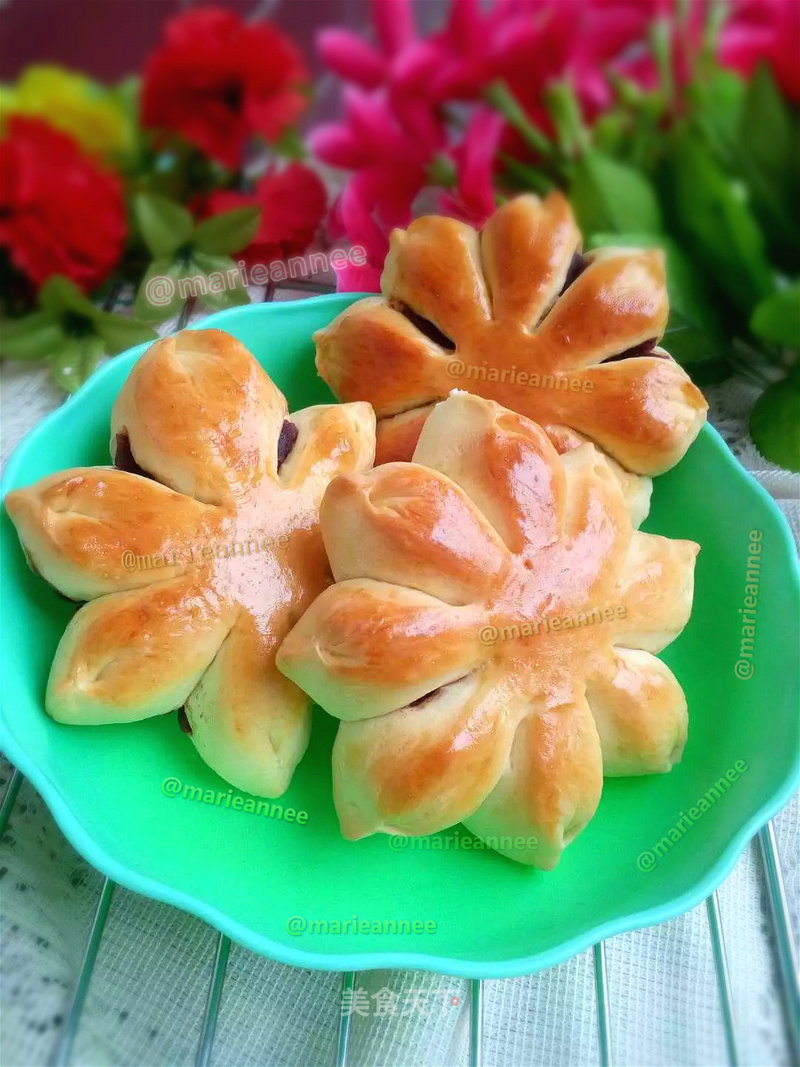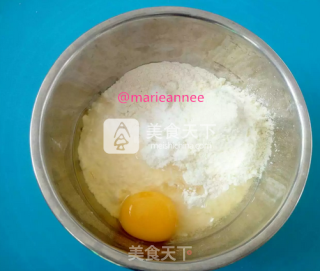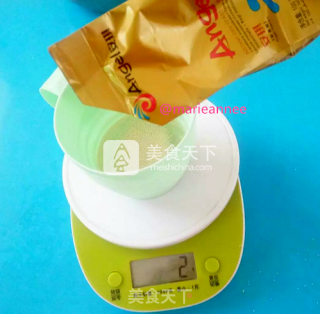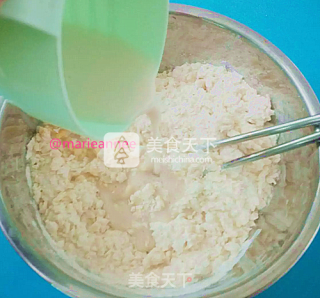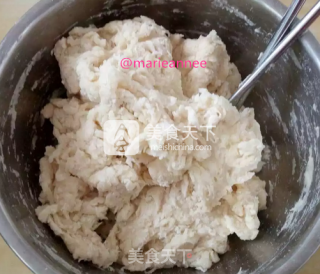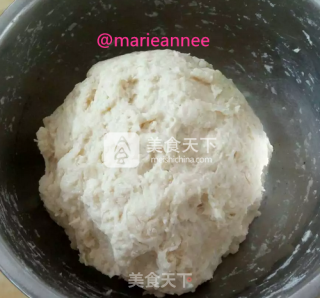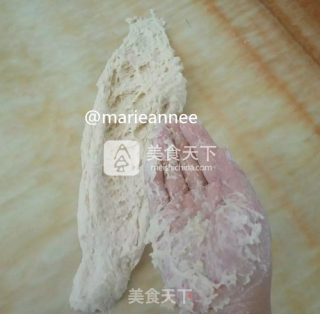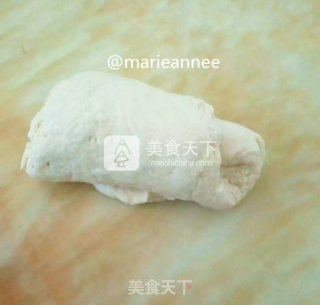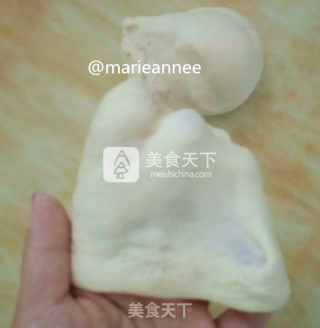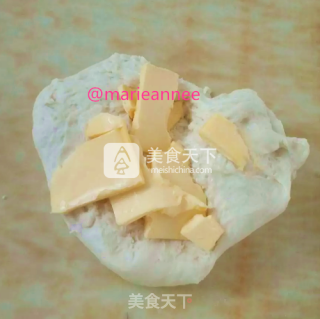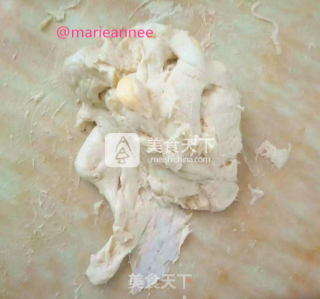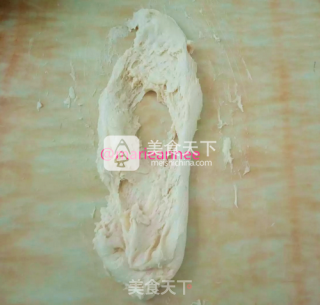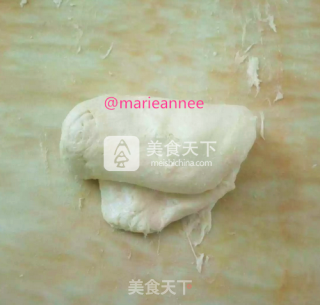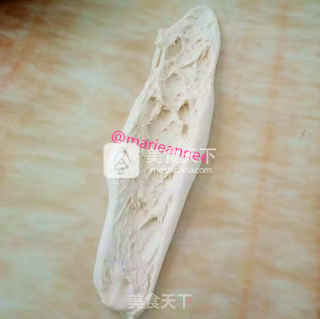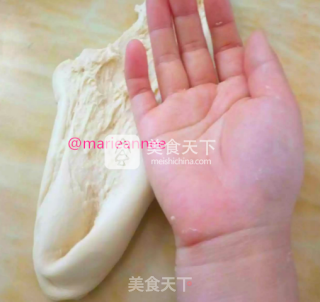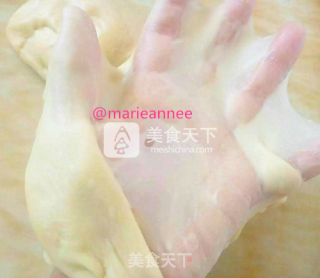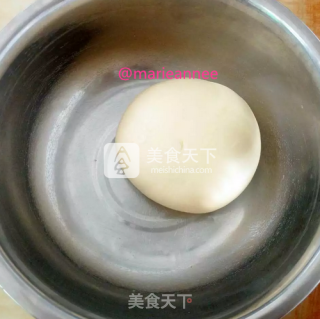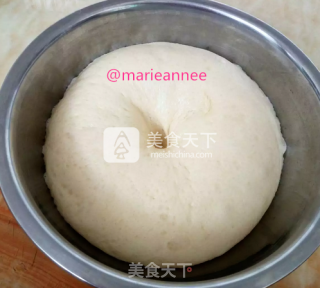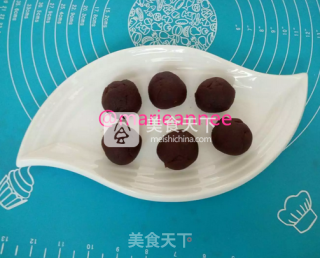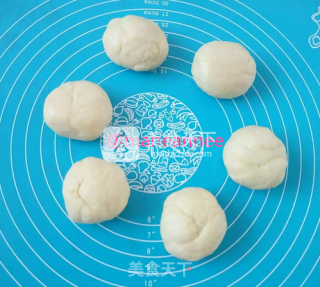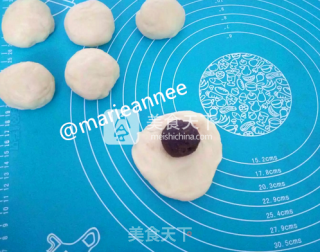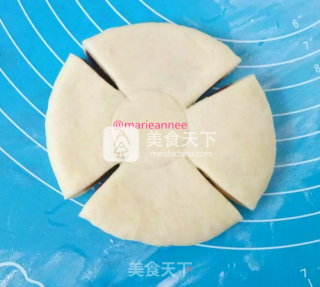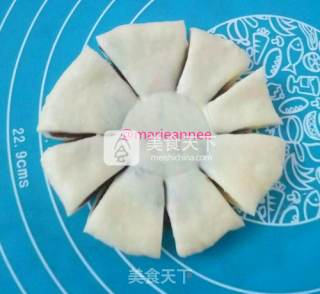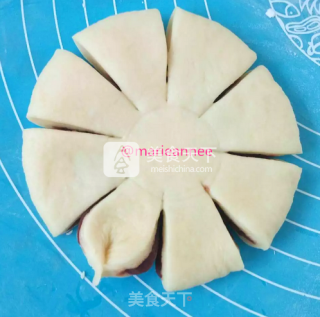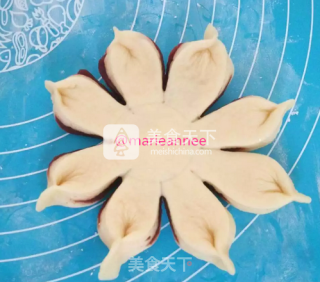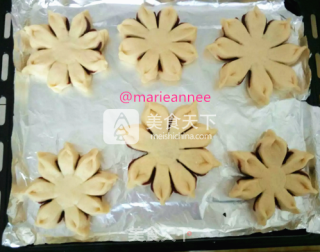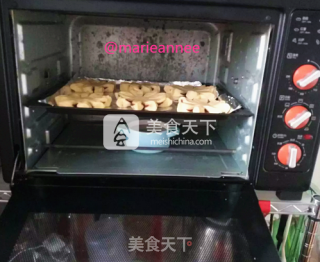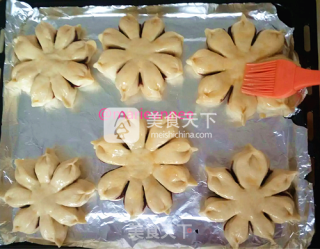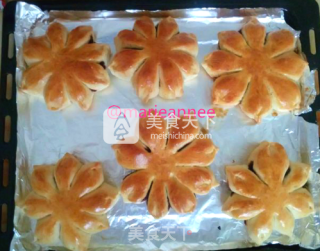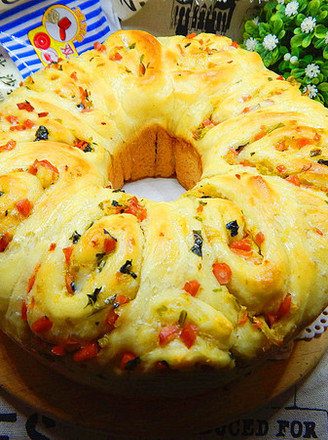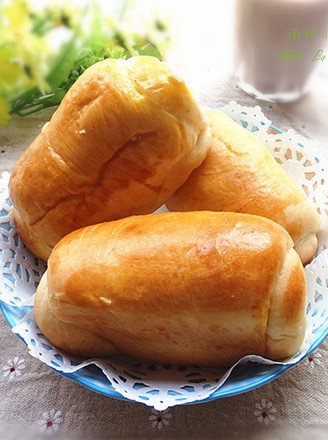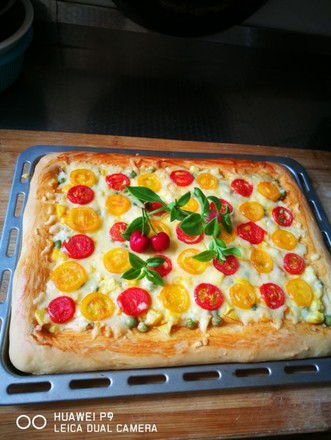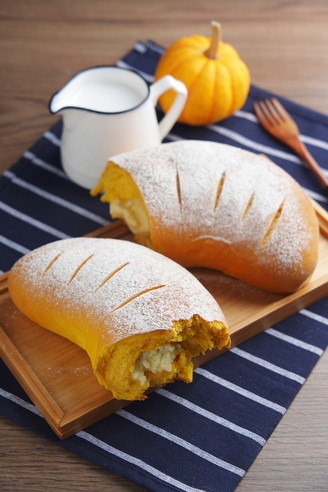Hand Kneaded Bean Paste Flower Bread
1.
Weigh the high-gluten flour, milk powder, salt, sugar, etc. to the corresponding grams, put them in a larger basin, knock in an egg, and mix well;
2.
Add two grams of yeast powder to 50 grams of water. Stir with chopsticks until fully dissolved
3.
Slowly pour the yeast water into the flour bowl and stir while pouring
4.
Stir with chopsticks until there is no dry powder and it is like cotton wool.
5.
Then knead the dough with your hands, cover it with plastic wrap, and let it rest for half an hour, so that the flour can fully absorb the water and become very moisturized, which can greatly shorten the kneading time. In summer, the temperature is high, so put it in the refrigerator to prevent yeast from fermenting.
6.
After half an hour, put the dough on the slate table and rub it out with the strength of your wrist. When you first knead it is very sticky. It is normal, so don’t be afraid.
7.
Retract it to fold it, change the direction of the dough and rub it out again, repeat the action of rubbing out and retracting until the thick film can be pulled out (if you didn't add enough liquid at the beginning, and the dough feels dry, you should add moisture in time) , Water replenishment method: Take a bowl of water and pat it on the dough with your hands. Do not pour water directly on the dough. You can dip your hands in water several times to add moisture. If the dough is too dry, it will not be easy to pull out the film).
8.
Knead to this state, as shown in the picture, you can pull out the thick film and then add the softened butter
9.
Add softened butter
10.
The dough after adding the butter will be very slippery when you start to knead it, and the dough will become wet and sticky again, just like a pile of torn cotton. It looks like a horrible bet. Knead for about 5 minutes, and the butter has been fully kneaded into the dough.
11.
Start rubbing again, rub it out first
12.
Retract to fold
13.
Or repeat the action of rubbing it out and then taking it back
14.
The dough is ready in half an hour. The kneaded dough will not stick to your hands or the countertop easily. When you lift the dough from the countertop, it will leave the countertop easily and completely. The palms and fingers are very clean.
15.
Take a small piece of dough to check the condition of the film. Use four fingers except the little finger to pinch the top of the dough, and then slowly pull it up, while pulling it while holding the dough with two fingers and pulling it left and right (it can be very easy Pull out the glove film, and it is not easy to break. The toughness means that the dough is kneaded in place (the dough breaks all at once, indicating that the dough still needs to be kneaded)
16.
Round the dough again and put it in a basin, cover it with plastic wrap or a damp towel and leave it in a warm place to ferment to 2.5 times its original volume.
17.
The successfully fermented dough feels very light to hold. Stick a little flour with your fingers and press the dough lightly. The fingerprints will not recover immediately, nor will it slowly collapse like a discouraged leather ball, which means that the fermentation is just right).
18.
During the dough fermentation process, the bean paste filling can be prepared, divided into 6 equal parts, 30 grams each
19.
Take out the fermented dough and press it to exhaust, then divide it into 6 equal parts, cover with plastic wrap and let it stand for ten minutes.
20.
Take a small piece of dough and press it flat, put on the bean paste filling, wrap it up and round it.
21.
The dough is closed down, flatten it gently, and roll it into a thick bun (do not roll it too thin, otherwise it will be easy to reveal the filling), use a round bottle cap to gently press the center of the dough to make a round mark, and use scissors to enclose Cut the round seal into 4 equal parts
22.
Divide each 1 equal part into 2 equal parts, so that a bread dough becomes 8 equal parts
23.
Then knead the two corners of each equal part to form a petal.
24.
Pinch out the other petals in the same way. All 6 doughs are made into flowers.
25.
The finished flower bread dough is placed in a baking tray lined with tin foil and placed evenly.
26.
The baking tray is moved into the oven for secondary fermentation. Put a bowl of water on the bottom of the oven for moisturizing.
27.
When fermented to 1.5 times the original size, take out the raw bread embryo and brush with egg liquid
28.
Put the baking pan into the middle layer of the oven that has been preheated at 180 degrees, and heat up and down, and it will be out in about 15 minutes.
29.
Take out the baking tray and let it cool before eating. If you can't finish it, keep it tightly sealed and finish it within three to five days as soon as possible.
Tips:
1. The oven time is for reference only
2. The size of eggs and the water absorption of flour are also different, so the amount of water should be controlled well. If the amount of liquid you just added is not enough at the beginning, and the dough feels dry, you must add water in time at this time. How to replenish water: Take a bowl of water and pat the dough with water by hand. Do not pour water directly on the dough. You can use a small amount Dip your hands with water several times to replenish moisture.

